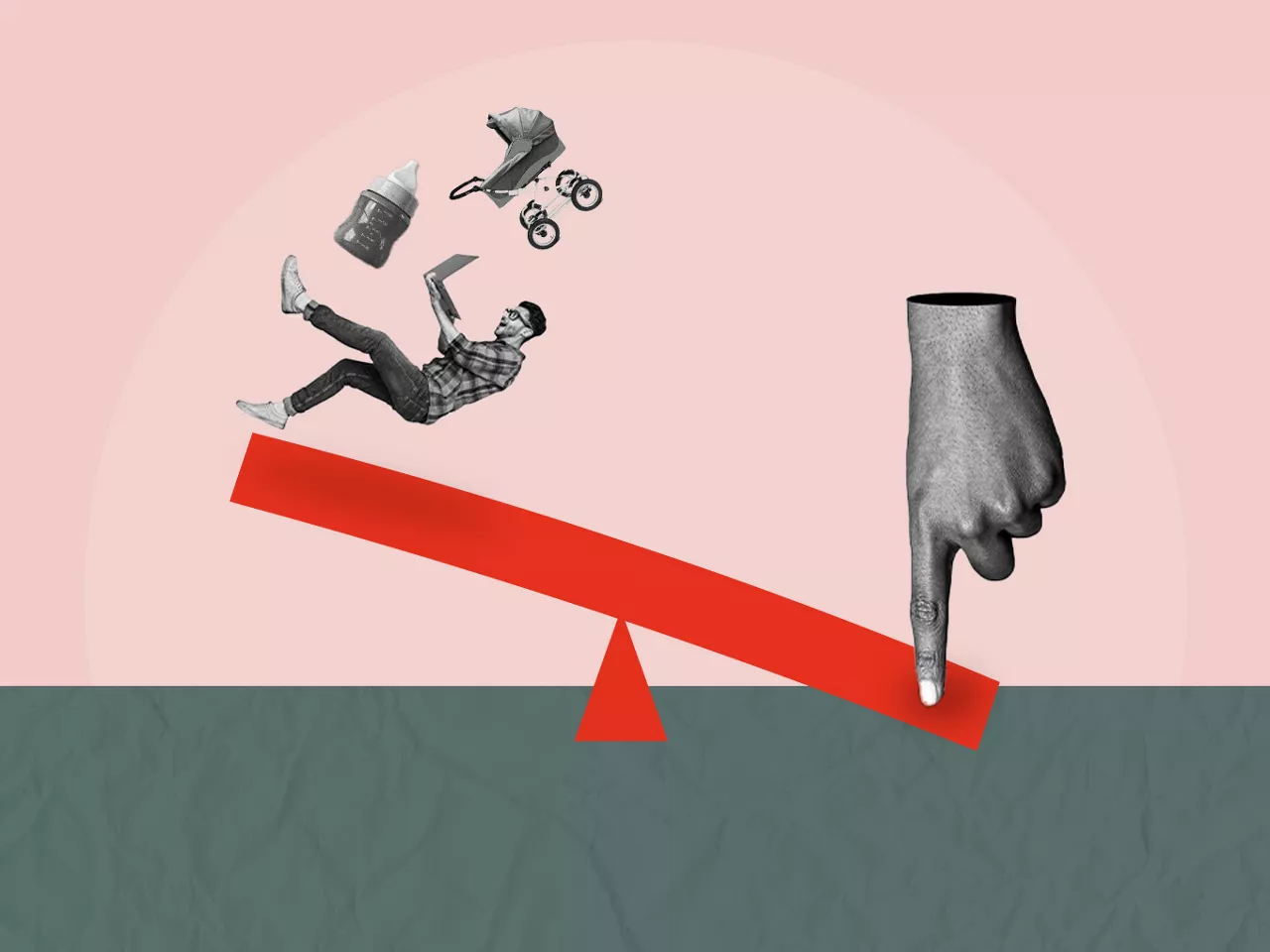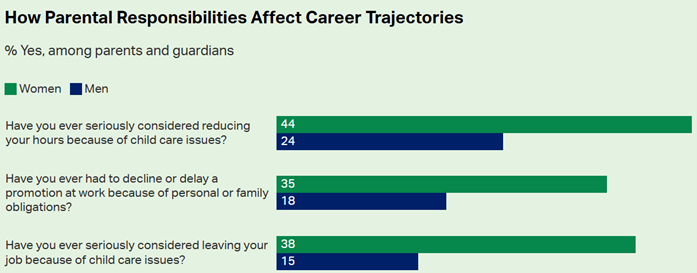Necessity is the Mother of Invention
How the ongoing struggle for work-life balance among parents will push innovation in AI.
Written by Stephanie Long | 3 min • March 31, 2025

Necessity is the Mother of Invention
How the ongoing struggle for work-life balance among parents will push innovation in AI.
Written by Stephanie Long | 3 min • March 31, 2025

The misalignment of the school and work day. The ever-scarcer after school activities, which bridge that gap. The plethora of illnesses that kids bring home to parents.
All of this impacts the careers of parents and caregivers - but especially of working mothers.
A study recently published by Gallup on work-life balance and the wellbeing of women employees in the U.S. showed that 17% of women reported having to address personal or family responsibilities at least once a day during work hours, compared to 11% of men. But more eye-opening was the fact that nearly double the number of mothers have considered reducing their work hours to address childcare scarcity issues compared to fathers - and this isn’t only a U.S. problem The study also emphasized that a solid support network – whether it be friends or family – is essential to achieving a balance.
What the Gallup data didn’t note explicitly is the fact that the proverbial village has been dwindling for generations. The single-family housing boom of the 1940s provided more space between individuals - and the option to not live right next door to your mother-in-law.
"We live in a modern village: coworkers and managers play a substantial role in work-life balance rather than neighbors and extended family. "
Instead, we live in a modern village: coworkers and managers play a substantial role in work-life balance rather than neighbors and extended family. Employer-sponsored programs and resources also play a role in the achievement of work-life balance.
As the old adage goes, it takes a village to raise a child; but given the constraints of modern life, must the village be made up only of people?
Artificial intelligence can be leveraged in many ways – some minor and some more substantial – to alleviate some of the pressures on the modern family, just as modern-for-its-time technology such as household refrigerators and in-home washing machines did for post-World War II families. AI has been assisting us at home in small ways for years, with data suggesting roughly two-thirds of U.S. consumers aged 25 to 49 years old use voice assistants daily for managing schedules or setting timers and alarms. But, there is also a clear line-of-sight to robot assistance for in-home tasks like watering plants and basic meal prep. In fact, a recent University of Oxford study determined that 40% of mundane household chores could be automated within the next 10 years, with grocery shopping topping the list as an AI-automatable task.
The potential of AI to create more balance in the lives of working parents is also clear: technology like Cubo AI (a baby monitor that uses AI for facial recognition) or Cradlewise (which uses AI to monitor a baby’s sleep patterns) gives parents more mental space to problem-solve at work as a bill toward promotion; the creative use of AI (like creating custom coloring pages with the help of ChatGPT) could save time for parents to take an extra Teams meeting.
According to research conducted by market research firm InsightAce Analytic, the global AI in childcare and parenting market opportunity is in fact so ripe with opportunity for innovation that it will quintuple in size by 2031 - from $3.96B in 2023 to $19.06B.
Although it’s challenging to find data on the demographics of software developers as it relates to parental status, one study from 2013 noted that the typical developer is married with 1 to 3 children. That means it’s parents themselves (specifically male parents) who are likely behind the majority of AI-powered parenting tools, which use Large Language Models (LLMs) and intelligent agents. That means they’re uniquely experienced to address some of the challenges many parents face.
Still, parents must make choices that impact their careers. There are many hats a caregiver of children must wear in modern society, and they can’t all fit on one, overburdened head.
 Pew Research
Pew Research
Work-life balance for parents is best achieved when humans support humans in their humanness. Regardless of AI innovation alone, it’s individuals lifting up and supporting other individuals which can enable parents to achieve balance between work and life. And yes, part of that humanness includes innovation to pair people with technology to solve problems, too.
AI is today’s technology that will improve tasks for parents, just as technology such as in-home washing machines and refrigeration did for our grandparents, generations ago. Afterall, necessity is the mother of invention, and the data shows there is a clear and present necessity for something to change for the modern working parent.